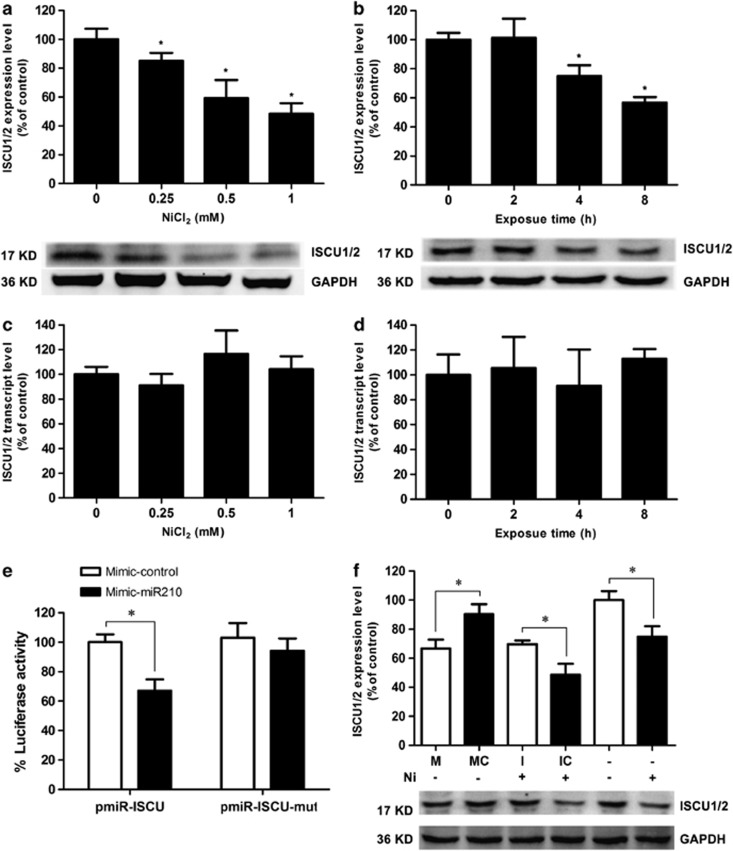Figure 2.
Nickel-induced miR-210 expression represses the level of ISCU1/2 protein. (a and b) The ISCU1/2 protein levels decreased after different NiCl2 treatments. (c and d) The transcript levels of ISCU1/2 do not change under any nickel exposure conditions. (e) The effect of miR-210 on ISCU1/2 was assessed using the luciferase reporter assay. The decrease of luciferase activity in cells that were co-transfected with the wild-type ISCU1/2 3′-UTR containing constructs and miR-210 mimic indicated that ISCU1/2 was a target gene of miR-210. (f) Western blotting revealed the effects of the miR-210 mimic or inhibitor transfection on the ISCU1/2 protein levels. ISCU1/2 is repressed by miR-210 mimic compared with the mimic-control (the left two lanes). During nickel exposure, the inhibition of miR-210 better preserves the level of ISCU1/2 compared with the inhibitor-control (the middle two lanes). The effect of nickel on the ISCU1/2 level was also evaluated in nontransfected cells (the right two lanes). The abbreviations M, MC, I, and IC indicate the transfection of miR-210 mimic, mimic-control, miR-210 inhibitor, and inhibitor-control, respectively. The sign ‘+' indicates the treatment of 1 mM NiCl2 for 4 h, and the sign ‘−' indicates the corresponding sham treatment. The error bar reflects the S.E.M. of at least three independent experiments. *P<0.05 compared with the control

